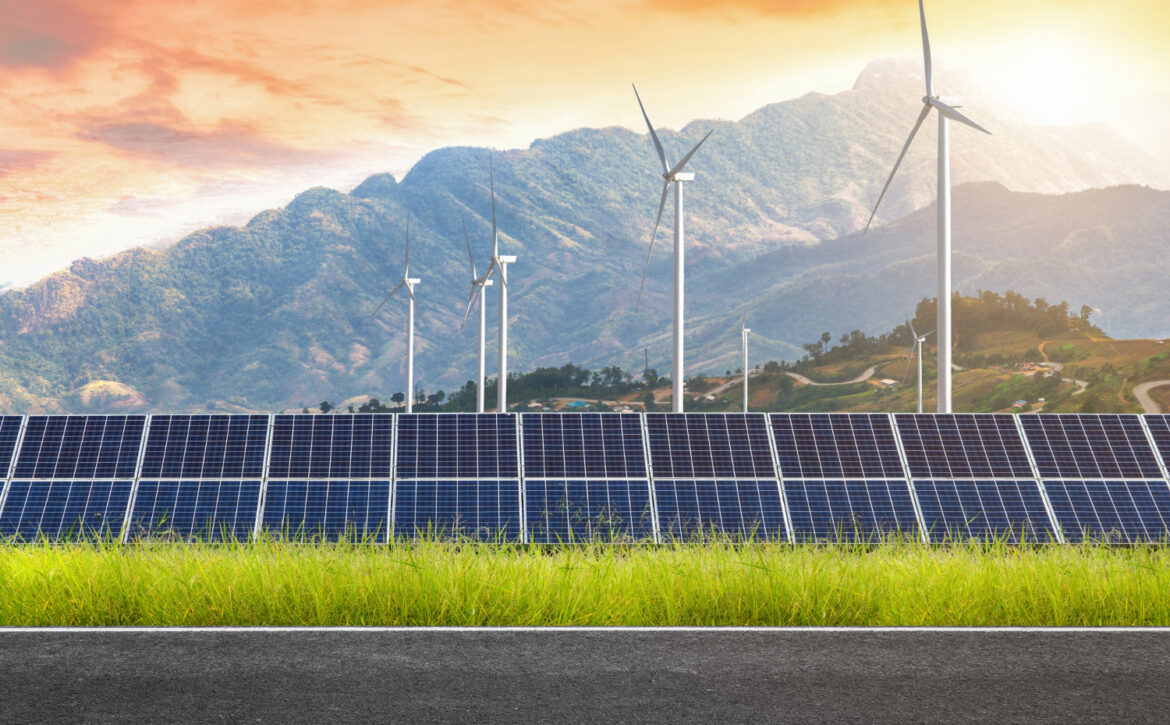The Rise of Solar Energy among Indian Manufacturing Business Sector
Introduction
The future of solar energy in India looks bright as the country continues its path toward sustainable development and renewable energy adoption. With growing concerns about climate change and the need to reduce carbon emissions, solar energy has emerged as a game-changer for various sectors, including manufacturing businesses and MSMEs. In this blog, we will explore the current status of solar energy in India, its importance for the future, and the scope it offers for businesses to embrace clean and sustainable energy solutions.
Solar Energy Business in India: Current Status and Future Potentials
India, being blessed with abundant sunlight, has significant potential for harnessing solar energy. The government’s efforts and favourable policies have led to remarkable growth in the solar energy sector over the past decade. Currently, India is among the top countries in the world in terms of solar capacity installation. The solar energy market in the country is witnessing a steady surge, with both large industries and small businesses recognizing the benefits of solar and implementing their own captive solar plants.
Solar panels, the primary source of solar energy generation, have become more accessible and affordable, making it an attractive option for businesses seeking clean and cost-effective energy solutions. The government’s initiatives, such as subsidies, tax incentives, PLI scheme and renewable energy targets, have further boosted the solar energy business in India. This favourable environment has laid the foundation for a promising future expansion of solar energy adoption across industries.
Why Solar Energy is Important for the Future?
The importance of solar energy for the future cannot be overstated. As a renewable and clean energy source, solar power offers several advantages over conventional fossil fuels. Firstly, it significantly reduces carbon emissions and helps combat climate change, contributing to India’s commitment to the global effort of sustainable development.
Secondly, solar energy is highly reliable and inexhaustible. The sun is an abundant resource, and harnessing it for power generation ensures a continuous and uninterrupted energy supply. This aspect is crucial for industries and businesses that require a stable and consistent energy source to operate efficiently.
Thirdly, solar energy reduces the dependency on imported fossil fuels, making India more self-sufficient in meeting its energy demands. This not only strengthens the country’s energy security but also reduces the impact of international fuel price fluctuations.
Solar energy is also cost-effective in the long run. Considering 30% equity in developing the solar plant, the payback period of the same would range from 12-18 months. Additionally, the operational and maintenance costs are significantly lower than those with conventional fossil fuel based energy sources. This cost-effectiveness makes solar energy an attractive option for industries and MSMEs looking to reduce their energy expenses and increase profitability.
The Scope of Solar Energy in India: Future Opportunities for Businesses
The future scope of solar energy in India is immense, and it presents exciting opportunities for businesses, especially in the manufacturing sector and MSMEs. Here are some key aspects that highlight the potential for solar energy adoption in the coming years:
- Sustainable Business Practices: With increasing environmental consciousness and sustainability becoming a focal point in corporate social governance, businesses are under pressure to adopt Environmental, Social and Governance (ESG) Practices. Embracing solar energy not only makes a business more competitive by reducing its manufacturing costs but also enhances the company’s image as an environmentally responsible organisation.
- Energy Cost Savings: As the cost of solar panels continues to decline and the efficiency of solar technology improves, businesses can expect significant energy cost savings over the long term. This translates into improved financial performance and enhanced competitiveness in the market.
- Energy Independence: The fluctuating prices of conventional energy sources pose a constant challenge for businesses. By investing in solar energy, industries and MSMEs can reduce their reliance on external energy providers and gain more control over their energy supply, leading to increased energy independence.
- Government Support: The Indian government’s continued support and encouragement for solar energy adoption through various incentives and policies create a conducive environment for businesses to invest in solar infrastructure.
Conclusion
As the world shifts towards sustainable energy solutions, solar energy has emerged as a key player in India’s quest for a greener future. The solar energy business in India has witnessed significant growth, and its importance for the future cannot be ignored. With a target of 280GW of solar installations in India by 2030, the scope of solar energy in India offers numerous advantages for the private sector industries and MSMEs, ranging from cost savings and energy independence to environmental sustainability and diversified revenue streams.
For businesses seeking a competitive edge, embracing solar energy is not just a choice but a strategic move towards a more sustainable and prosperous future. With the government’s support and the continued advancements in solar technology, the future of solar energy in India looks promising, ushering in a new era of clean, renewable, and abundant power for businesses across the country.
Solark is envisioned as a platform to provide decarbonization solutions for private sector businesses in India by playing a vital role in the broader systemic changes that Industries and MSME’s will undergo in the transition towards achieving India’s net zero emissions target by 2070 collectively set by our visionary Prime Minister Narendra Modi.
Looking at a massive opportunity to reduce the carbon footprint in India, Solark as a platform providing decarbonization solutions, has firstly commenced with providing renewable solar energy end-to-end solutions to Industries and MSME’s in Gujarat, India in captive and power purchase agreement models through our Solark Renewable Energy Parks which will be entirely powered by naturally available solar energy with future plans to expand in other parts of the country.
Solarks Renewable Energy Parks main benefit is the sheer size of an independent project which starts from as minimum as 500KW DC while also getting the benefit of economies of scale. This gives chance to majority SME’s and MSME’s to develop their plant independently with complete peace of mind. Contact our team of experts to setup your business captive solar plant at +91 261 2200500.
Solark Infrasolutions Private Limited is a joint venture between promoters of SNS Developers and SACH Electromech based in Surat, Gujarat which commenced its operations in 2021. It is a registered Startup with Government of India under the Startup India programme recognized by the Department for Promotion of Industry and Internal Trade. Solark’s team comprises experienced individuals in the field of real estate, electrical infrastructure, research, and development of high-power electronics, ESG, data scientists, finance, and investment banking.
FAQs –
How can solar energy benefit manufacturing businesses in India?
Solar energy offers several benefits to manufacturing businesses in India. Firstly, it significantly reduces energy costs in the long run, providing a competitive advantage. Secondly, solar power helps businesses reduce their carbon footprint and contribute to environmental sustainability, aligning with modern consumer preferences. Lastly, by investing in solar energy, manufacturing businesses can achieve greater energy independence and mitigate the impact of fluctuating fuel prices.
Is solar energy a viable option for MSMEs (Micro, Small, and Medium Enterprises)?
Yes, solar energy is a highly viable option for MSMEs in India. With the government’s support and favourable policies, MSMEs can access incentives such as 0.40 INR/Unit savings in the banking charges applicable to each electricity unit produced through solar plant to make solar installation more affordable. Moreover, solar power allows MSMEs to reduce operational costs, enhance their brand image through sustainability initiatives, and ensure a stable energy supply for their business operations.
What is the future expansion potential for solar energy in India?
The future expansion potential for solar energy in India is immense. The country has abundant sunlight, making solar power a readily available and reliable source of energy. The government’s focus on renewable energy and its ambitious renewable energy targets further solidify the bright prospects for solar energy growth in India. As technology advances and costs continue to decline, the solar energy sector is poised for exponential growth in the coming years.
How can businesses assess the feasibility of adopting solar energy? Assessing the feasibility of adopting solar energy requires a comprehensive analysis of various factors. Businesses should consider their energy requirements, available land space for solar installation, initial investment costs, potential savings, and payback period. Engaging with experienced solar energy consultants or providers can help businesses conduct a thorough feasibility study and identify the best solar energy solutions tailored to their specific needs and goals.



